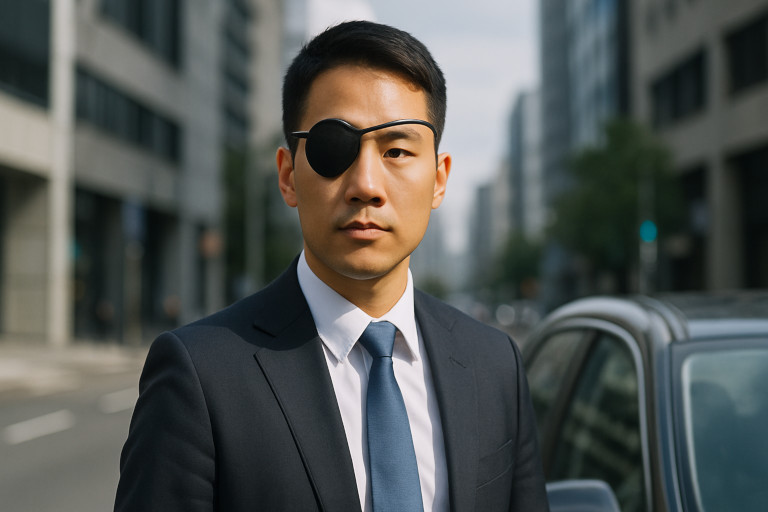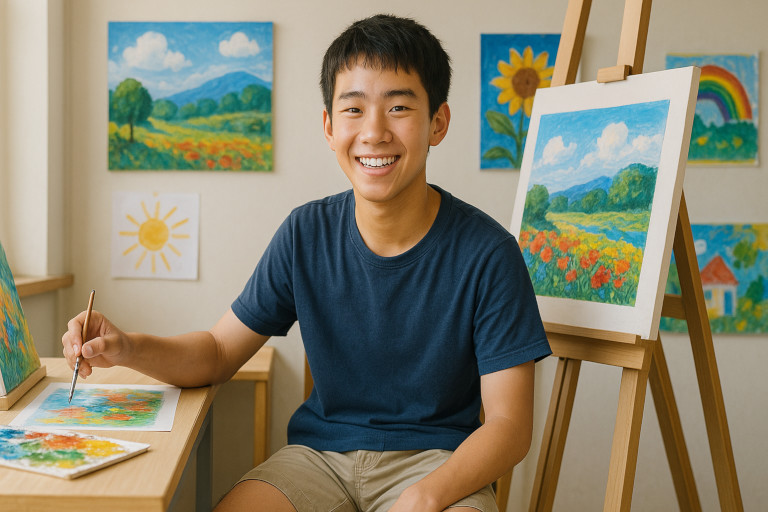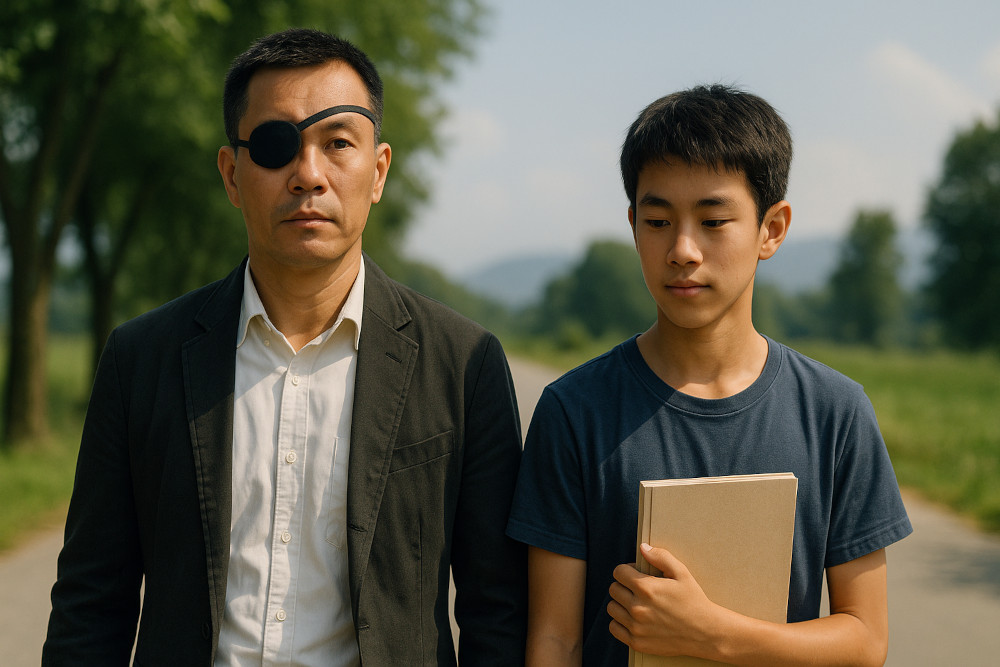In Taiwan, two individuals — one a man who lost an eye in a devastating car crash, the other a teenager born with a malignant tumor — chose not to let fate define them. Their paths were different, but their stories are connected by the same powerful thread: resilience in the face of overwhelming odds.
He lost an eye, but refused to lose his drive
Chenyang, the older of two siblings, showed talent and optimism from an early age. He learned to play the organ under his father’s guidance and frequently performed at school and church events. After high school, he served in the Air Force’s radar communications unit and later worked as a ground crew member at Taoyuan Airport.
One day, while driving home from work exhausted, he fell asleep at the wheel as he exited the freeway. His car collided with a parked truck, and shards of glass from the windshield pierced his right eye. Though bleeding heavily and unable to see, he remained conscious and called for help.
Doctors delivered the grim news — his right eye couldn’t be saved. Surgery to remove it was unavoidable. His parents were so distraught that they couldn’t bring themselves to sign the consent form. In the end, his sister-in-law, a nurse, made the heartbreaking decision on their behalf.
Despite the trauma, Chenyang’s spirit remained unbroken. Refusing to rely on buses or lose his independence, he bought a used car and insisted on learning to drive again with only one eye. His parents, fearful and upset, tried to stop him — but Chenyang held firm.
“I may have lost an eye,” he told them, “but I won’t let myself fall.”
He pushed through the dizziness and challenges of depth perception, gradually adapting to a prosthetic eye. Later, he joined a U.S.-based life insurance company, where he used his personal journey to connect with clients. His determination paid off — he rose to become a division manager at Georgia Life and consistently ranked among the top performers, earning multiple international awards.

Though his vision was halved, his ambition never wavered. He confidently drove again, passing cars on the highway, and even joked about collecting speeding tickets. His story proves that when life takes something from you, you can still come back stronger — with grit and purpose.
A childhood cancer survivor who paints his way to hope
Tang Han-Chung was only 11 months old when doctors discovered a malignant tumor behind his bladder. His chances of survival were slim — he was expected to live no more than three years. At one point, he could only move around with a wheelchair.
Years of chemotherapy, radiation, and electrotherapy followed. The treatments were grueling and left his bones weakened, limiting his physical abilities. Yet Tang never let his condition define him. Now a junior high student, he is known not for his illness, but for his radiant optimism and artistic talent. His colorful, expressive paintings reflect joy, hope, and inner strength.
He lives with one leg shorter than the other, but rarely complains. Only in the privacy of his diary does he express the frustrations of his daily physical challenges. In public, he remains upbeat and full of creative energy.
“Although life is full of disappointments and setbacks,” he once wrote, “I believe life is precious — and we should let it shine.”
Of mixed Korean and Bunun heritage (the Bunun being one of Taiwan’s Indigenous peoples), Tang’s resilience has become a source of pride for his entire community. His mother, siblings, classmates, and friends have supported him throughout his journey. At his traveling art exhibitions around Taiwan, they sing hymns and celebrate his achievements together.

Through his artwork, Tang continues to share his story, reminding others that even when the body is fragile, the human spirit can be bold and unshakable.
Choosing courage over surrender
Chenyang and Tang Han-Chung faced situations that could have easily broken them. One lost an eye. The other nearly lost his life. But instead of giving in, they chose to fight — not just for survival, but for a purpose.
Chenyang transformed personal tragedy into a career of connection and leadership. Tang turned the pain of childhood illness into works of art that inspire others.
Their lives remind us that adversity does not have the final word. It is often our response to suffering — not the suffering itself — that defines our legacy. With resilience, support, and the right mindset, even the harshest trials can become turning points.
For anyone facing setbacks, these two stories offer something powerful: hope.
Translated by Eva
Follow us on X, Facebook, or Pinterest

